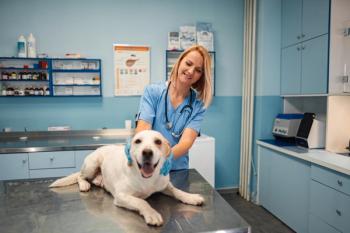
- Firstline January/February 2019
- Volume 15
- Issue 1
Technicians and telehealth: Where we are now, and where we could go
Technicians have long been essential in providing telehealth to veterinary patients, and new technologies are expanding the depth of care they can provide. How are technicians skills being leveraged alongside technological advancements now, and how can practices take telehealth a step further to reach more patients in the future? Read on.
Bridge Veterinary Services in Berkeley, California, utilizes telehealth in hospice care. Once the VCPR is established, technicians are able to independently and remotely check on patients in their natural environments. In a world where convenience is king, it comes as no surprise that the veterinary field is under pressure to change and adapt. Pet owners use the convenience criterion when deciding where to obtain veterinary advice and care, and between Dr. Google and social media, they have several instantly gratifying paths leading them to both reputable and not-so-reputable information.
elehealth offers a way for veterinary practices to compete with the convenience of Dr. Google, and veterinary technicians and nurses are particularly positioned to help expand its use in the field.
Expanding existing roles with new tools
Telehealth isn't new by any means. Teleadvice, or general advice regarding the patient's health delivered via remote means, and teletriage, assessing how urgently a patient needs care based on information obtained remotely, has been provided by veterinary technicians and nurses by phone and email for decades. However, new digital communication technologies, such as the ability to send photos, video chat and conduct real-time chats through text or instant messaging, has expanded how and what information can be shared.
The role of technicians in telehealth especially shines when it comes to patients with an established veterinarian-client-patient relationship (VCPR). For example, a technician or nurse can have a discussion with a pet owner regarding postoperative wound healing and adequacy of pain control that includes photos and videos instead of having to rely on the owner's descriptions.
To provide another example, Bridge Veterinary Services, which is operated by Dr. Shea Cox in Berkeley, California, currently utilizes veterinary nurses in hospice care. Once the VCPR is established through a joint appointment with both the doctor and the technician, the technician can independently and remotely perform quality-of-life consultation appointments. Using photos and videos, technicians are able to see the patient's comfort level in the home environment and give advice while avoiding a potentially stressful visit clinic visit for the patient-a service that is invaluable to many pet owners.
The future of technicians and telehealth
The method in which the VCPR can be established is a common point of debate when discussing telehealth. Despite ever-advancing technologies, there simply isn't anything (at least yet) that can replace putting your own hands on an animal for a thorough physical exam.
Whichever side of the fence you may be on regarding this debate, let's ponder this thought: What if technicians and nurses could replace the veterinarian in providing the physical exam, report their findings and then have the doctor interpret them?
Consider this possible scenario: A veterinary technician is sourced from an app service that connects technicians with veterinary practices to reach clients requesting a house call. The technician visits the home of a miniature poodle with a history of congestive heart disease and conducts a physical exam. She reports her findings of bilateral crackles upon auscultation, visible distension of the jugular veins and a systolic blood pressure of 180 mmHg to the veterinarian from the practice using the app service. The veterinarian then uses this and other information obtained from the technician to deduce that the patient has likely developed pulmonary edema secondary to congestive heart disease.
The above scenario is just one example. There are many ways in which we can responsibly leverage new technologies alongside the skills and expertise of veterinary technicians to reach more patients more effectively and, of course, more conveniently.
Kenichiro Yagi, BS, RVT, VTS (ECC, SAIM), practices at Adobe Animal Hospital in California as an ICU and Blood Bank Manager. He is co-chair of the Veterinary Nurse Initiative and serves as a board member of the Veterinary Emergency and Critical Care Society, the Academy of Veterinary Emergency and Critical Care Technicians and the Veterinary Innovation Council.
Articles in this issue
almost 7 years ago
Share the love with your punny veterinary technician valentinealmost 7 years ago
Weird and wonderful: 5 tips for handling feline aggressionalmost 7 years ago
Surviving work and parenthood in veterinary medicinealmost 7 years ago
Mommy needs to save livesalmost 7 years ago
Going Fear Free? Dont get derailedalmost 7 years ago
Nutrient strategies for managing those (FIC)kle FLUTD casesalmost 7 years ago
How to sharpen dental scalers and curettesalmost 7 years ago
Ask Katie: How should I handle employee reviews?almost 7 years ago
Telemedicine: Join, or die?Newsletter
From exam room tips to practice management insights, get trusted veterinary news delivered straight to your inbox—subscribe to dvm360.






